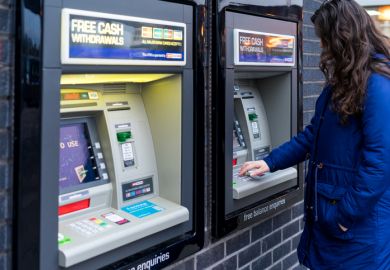Growing numbers of disadvantaged students could be rejected by all the universities they apply to as competition for UK degree courses grows, Ucas has warned.
The admissions service is predicting that there could be 1 million applications for undergraduate courses in the country each year by the end of the decade, a 30 per cent increase on today.
Ucas modelling suggests that the gap in the application rate between the most and the least advantaged students could narrow over that period. It suggests that the application rate for the least privileged students could reach 35 per cent by 2030, up from 29.4 per cent in 2022, while the proportion of their more affluent peers applying could hit 65 per cent, up from 60.1 per cent.
But lower attainment levels among disadvantaged students mean that they could be increasingly likely to be left disappointed at the end of the university application process.
Ucas suggests that 8.6 per cent of students from the least advantaged neighbourhoods could receive no offers by 2030, compared with 2.3 per cent today. Today, one in 16 of the most disadvantaged students gets just one offer, but in 2030 this could increase to one in six, with the proportion receiving three or more offers also reducing.
The admissions service suggested that universities would need to change their offer-making to improve diversity, for example, by making greater use of contextual offers that take students’ backgrounds into account or targeting offer-making to certain cohorts. Improving transparency around the minimum grades that students are likely to be admitted with – as opposed to the advertised entry requirements – could also help.
“Adapting offer-making behaviours will help mitigate the risk presented by the ‘Journey to a Million’ and an increase in applicants resulting in an increase in disappointment, with the potential for those at the lower end of the attainment spectrum being squeezed out,” said Clare Marchant, Ucas’ chief executive.
“The Journey to a Million does present new opportunities, however, and with timely collective action we can maintain significant progress in widening access through efforts including targeted offer-making strategies, minimum entry requirements for under-represented cohorts and outreach work.”
Mike Nicholson, the director of recruitment, admissions and participation at the University of Cambridge, has previously suggested that reducing the number of universities a student can apply to from five to four would be one way to alter the volume of applications institutions must consider.
Register to continue
Why register?
- Registration is free and only takes a moment
- Once registered, you can read 3 articles a month
- Sign up for our newsletter
Subscribe
Or subscribe for unlimited access to:
- Unlimited access to news, views, insights & reviews
- Digital editions
- Digital access to THE’s university and college rankings analysis
Already registered or a current subscriber?








